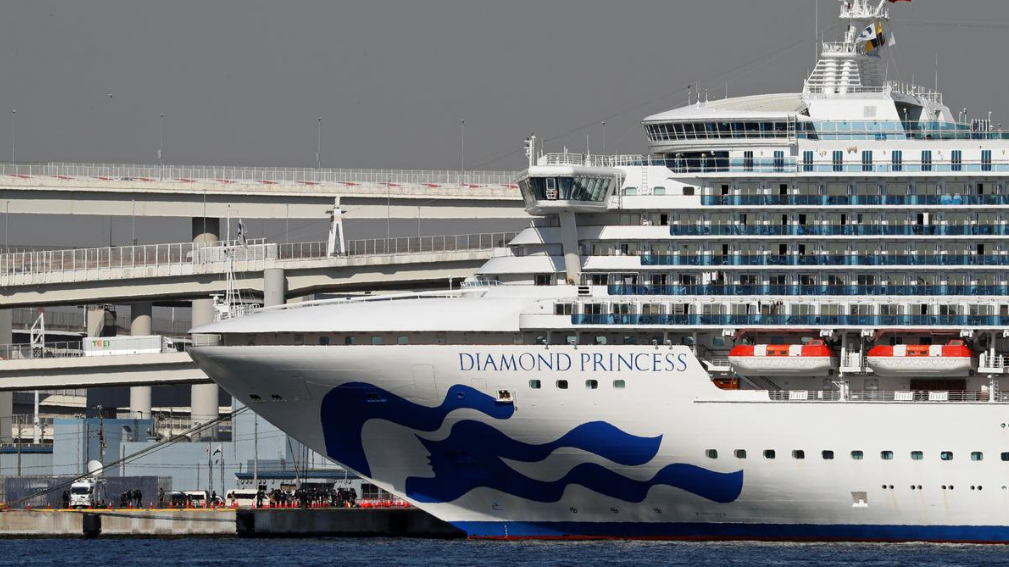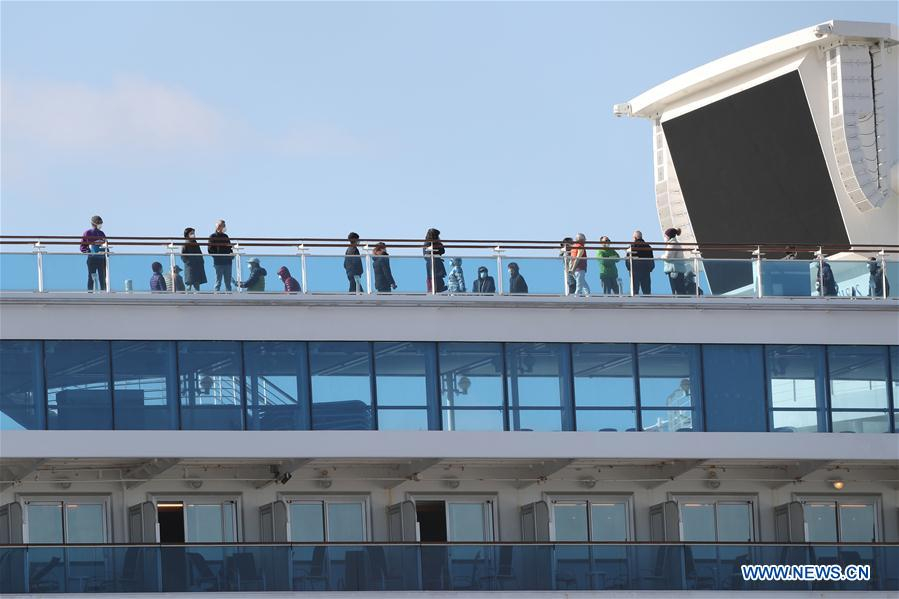
The cruise ship Diamond Princess. /Reuters
The cruise ship Diamond Princess. /Reuters
Editor's note: Jonathan Arnott is a former member of the European Parliament. The article reflects the author's opinions, and not necessarily the views of CGTN.
If you want to see the worst-case scenario for the spread of any virus, you need look no further than a cruise ship. The cruise companies know it.
At the best of times, cruise liners take plenty of precautions to prevent outbreaks of anything from the common cold to norovirus. They're hygiene-conscious, disinfecting on a regular basis and expecting passengers to take precautions too.
The problem is that a ship is such an enclosed space. Hundreds or even thousands of people might be sharing buffets, or swimming pools, or toilets. Even under quarantined conditions, air is still circulated through ventilation systems. The "population density" on a cruise ship is far higher than any city.
Crew accommodation is even more cramped, and work must still be done to serve food to passengers – hopefully without contamination. However sympathetic I might be to passengers on the Diamond Princess, my heart goes out even more so to the crew.
However hygiene conscious you might be, the challenges of keeping a virus under control are substantially more difficult at sea than on land. When cruise ships are described as "floating Petri dishes," it's not a bad analogy. Australia's Chief Medical Officer, Professor Brendan Murphy said, "Cruise ships are well known as a place where communicable diseases can be rapidly transmitted."
I can't blame cruise companies for being cautious. When an 83-year-old American MS Westerdam passenger tested positive for COVID-19, quarantine measures were put in place. Nobody else was infected, which at first seems like a massive disease control success story. It's no longer certain, though, whether she ever had COVID-19 at all.
The American Center for Disease Control first issued a statement saying that she did not, then retracted the statement. Cambodia has also questioned the initial positive test result, whereas Malaysia defends it. Caution is certainly a good thing, but the confusion surrounding this case makes it difficult to know what – if anything – we can realistically learn from the MS Westerdam.
The precautionary principle is important, although it leads to temporary disruption whenever there is a potential case: the Costa Smerelda was held in lockdown, only for it to later transpire that the passenger concerned simply had a case of the flu.

Passengers are seen on the deck of the "Diamond Princess," a cruise ship which has been kept in quarantine at the port of Yokohama in Japan, February 19, 2020. /Xinhua
Passengers are seen on the deck of the "Diamond Princess," a cruise ship which has been kept in quarantine at the port of Yokohama in Japan, February 19, 2020. /Xinhua
The Diamond Princess is the only cruise liner on which there is a clear, known outbreak. It's tempting to be highly critical of the quarantine efforts on board, but for a ship with 1,100 crew and around 2,600 passengers – few with any medical training – the size of the task facing them was huge.
There are 695 known cases of those who were on board the Diamond Princess, a total of almost 20 percent of those on board. While the quarantine clearly failed, crew members continued to work under difficult conditions and effectively risked their lives to ensure that they were still able to provide food to the passengers.
Crew members share toilets, eat communally in a mess hall, and share sleeping arrangements. Maintaining an effective quarantine would have been difficult no matter how efficient the systems.
According to Kentara Iwato of Kobe University, "the cruise ship was completely inadequate in terms of infection control." When members of the crew became sick, there were no spare cabins; so they initially had to continue to share with healthy colleagues.
With no separation between contaminated and non-contaminated areas of the ship, there was no chance of containing the virus. Calls to evacuate the ship went unheeded, with the number of cases increasing accordingly.
Shigeru Omi, who was previously a regional director of the World Health Organization, pointed out that "the ship was not designed to be a hospital. The ship was a ship."
By failing to evacuate the ship in a timely manner, we should have learned something about the worst-case scenario for how the virus spreads. It should be possible to use the data to improve scientific models, which could then inform future disease control methods. Yet even that data has not been forthcoming. Academic research which could help us learn how to control the virus has been delayed by slow information-sharing.
The situation on the MS Westerdam, where it is still not entirely clear whether or not a patient did have the COVID-19, highlights another inconvenient feature of the virus.
The amount of the virus produced by the human body may vary from day to day, and symptoms are often uncorrelated with levels of the virus within the body. A single negative test for the COVID-19 does not completely rule out the possibility that a patient may have it.
Both crew and passengers have been failed by a slow response from the international community regarding the Diamond Princess. The lack of research, and uncertainty over what actually happened on the MS Westerdam, has generated more questions than answers. That should not be the case.
(If you want to contribute and have specific expertise, please contact us at opinions@cgtn.com.)